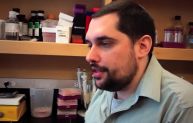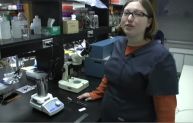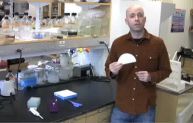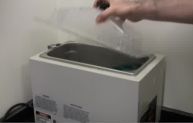98 Search Results for "pipetman and pipette and pipet" – Page 3

How to Quickly Pour a Small Number of LB-Agar Plates
https://benchfly.com/video/160/how-to-quickly-pour-a-small-number-of-lb-agar/If you want to quickly pour LB agar plates, but you only need a small number of them, preparing, autoclaving, pouring and cooling a large batch can be time consuming and wasteful. Here's a quick tip to pour a small number of plates quickly.

How to Use Graduated Cylinders
https://benchfly.com/video/153/how-to-use-graduated-cylinders/Learning how to use graduated cylinders to accurately read volume is an essential component of biological and chemical research. So here's a quick tutorial on how to select and read the properly sized graduated cylinder for your experiment.

Restriction Enzyme Digest Protocol: Cutting Close to DNA End
https://benchfly.com/video/1542/restriction-enzyme-digest-protocol-cutting-cl/Did you know that proximity to the end of a DNA molecule can influence the success of a restriction enzyme digestion? Well, it can, and Yvette explains how to handle cleavage close to ends. Her tips can prevent you from wasting time and enzyme cutting it too close!

Why Should You Use PEG in a Ligation Reaction?
https://benchfly.com/video/1544/why-should-you-use-peg-in-a-ligation-reaction/Have you been adding PEG to your ligase reactions, but weren’t entirely sure why? Or did someone recommend the addition of PEG to improve your ligations, but you’d like a little background on why it might help? Greg can explain the hows and whys of PEG’s addition to ligation reactions, and help you to decide whether or not it might be right for your ligations.

How to Pour an Agarose Column
https://benchfly.com/video/731/how-to-pour-an-agarose-column/Pouring an agarose gel may not be the most exciting protocol in the world, but it's a key technique in the lab. Here we show you how to pour highly reproducible gels for technically demanding experiments. We also give tips on shortcuts you can take when pouring routine gels, where precision isn't critical. Buying resin in bulk and packing yourself is fast and is an easy way to save money.

How to Bomb-load Capillary Tips or Frits for LC/MS
https://benchfly.com/video/104/how-to-bomb-load-capillary-tips-or-frits-for-/This is how we prepare and bomb load capillary tips and frits for use in LC/MS. Be sure to wear proper protection as this protocol uses high pressure to pack the LC/MS tips.

How to Perform Colony PCR
https://benchfly.com/video/57/how-to-perform-colony-pcr/Colony PCR is an easy way to rapidly screen ligation reactions for positive clones - and will save you both time and money. Once you try it, this technique will change your molecular biology life.

How to Mail DNA
https://benchfly.com/video/30/how-to-mail-dna/Knowing this trick for how to mail DNA to collaborators will put an end to hunts for styrofoam boxes and active FedEx account number. If you have an envelope and a postage stamp, you're ready to get started.

How to Keep a Clean Waterbath
https://benchfly.com/video/58/how-to-keep-a-clean-waterbath/Keeping a clean waterbath is an important step in preventing bacterial and fungal contaminations, which can wreak havoc on tissue culture rooms and incubators. This reagent will help keep your waterbath from becoming a slime bath.

How to Calibrate Pipettors
https://benchfly.com/video/87/how-to-calibrate-pipettors/Learning how to calibrate pipettors takes only a few minutes and should be done once a year to make sure your experiments are accurate.

